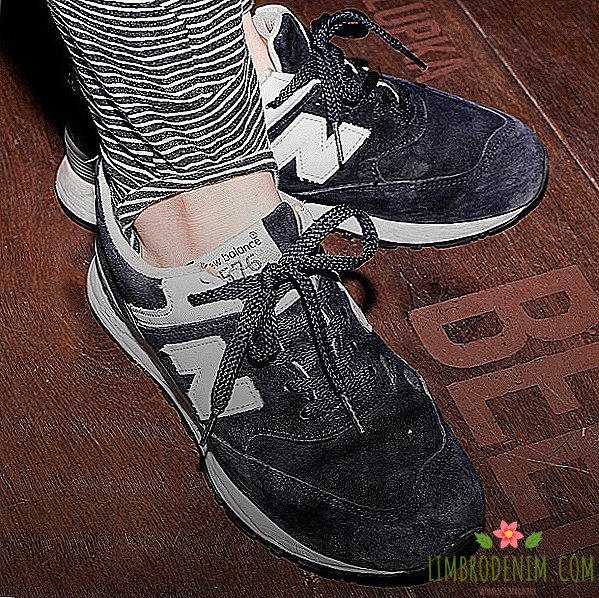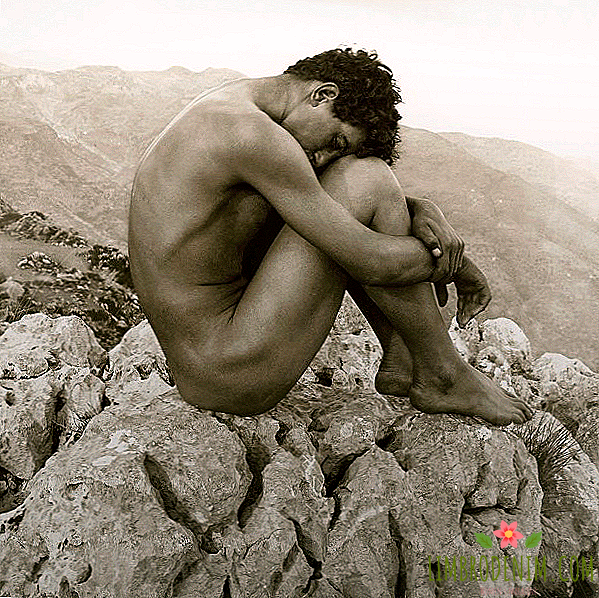Vivienne Westwood: Life-long Rebellion
The film company "Pioneer" on April 19 releases in the Russian film hire "Westwood. Punk, icon, activist." This is a worthwhile movie about one of the most famous British designers, which you can even go to those who are not interested in fashion. According to the already established tradition, the main character and her relatives met the film without enthusiasm: the eldest son of designer Ben, for example, accused the director Lorna Tucker of cutting the story lines about his mother's charitable and social activities. Yet the picture shows Westwood in all its legendary versatility. We understand why the name Vivienne Westwood is so significant for British fashion and culture.
Westwood staged an aesthetic revolution, cheerfully promoting punk on two fronts: fashion and music. This is where the brand’s style originates, inspired by crazy street fashion, musical culture and the history of the British Empire.
"When I did punk years ago, “West Cut tells The Cut, it was about the same thing: justice, trying to create a better world. I just have other methods today. ”If one day someone decides to collect all the examples of activist activities of an English designer, which the British themselves put on a par with Queen Elizabeth II and Margaret Thatcher, he will have to publish a weighty volume. Design for Vivien was not always an end in itself , and a means of conveying their own ideas - from cultural to political.
Vivienne still bears the name of her first husband, Derek Westwood, with whom she quickly broke up, and has a history of trying to study at an art school - which she also left without being sure that a girl from a working-class family could become her own in a chic bohemian environment. It is believed that her second husband, Malcolm McLaren, strongly influenced her self-confidence. Not a very successful art school student, he turned out to be a great connoisseur of the conjuncture and a successful producer of the Sex Pistols group, managing to bring punk music from dirty garages to the big London and later world stage.
Spouses staged an aesthetic revolution, cheerfully and fearlessly promoting punk on two fronts: fashion and music - and in the early 1970s opened the Let It Rock store in London, better known as Sex. This is where the style of the Vivienne Westwood brand comes from, inspired by the reckless street fashion, musical culture and the history of the British Empire. Ripped shirts, anarchist slogans, rivets, pins and fetishism symbolized a rebellion against capitalism, which the brand continues to this day.
Personal life of Westwood is tightly intertwined with her career: the third spouse of the designer, Andreas Krontaler — whom she met in the late 1980s, when she taught at the University of Art of Vienna (Krontaler was her student) - today is her permanent ally and co-author of all collections of the brand. Paying him his due, the queen of punk renamed the label Vivienne Westwood to Andreas Kronthaler for Vivienne Westwood.
Like many women designers, Westwood herself is the best incarnation, the quintessence of the style that she cultivates with her clothes. Become the face of advertising shots, go to the podium, showcasing a new collection, or walk in the final of the show with a wheel - in every move, the punk activist is honest, organic and charming. In the spring advertising campaign of this year, in addition to Westwood itself, Chloe Sevigny, tattered, pale, unpainted, with naked, flattened palms breast, appeared. The shooting was enthusiastically greeted by a fashionable community: they saw in it both freshness and spontaneity, and a call not to be afraid of being ridiculous, absurd, relaxed and frivolous - in a word, alive.
Westwood herself, despite her age, is vital and joins any interesting plot with energy that many twenty years will envy: joins the protest action of young doctors, demanding improved working conditions, drives up to the prime minister’s house on a tank or makes a petition against modified products. She manages to implement dozens of creative projects: create costumes for opera and theater, develop uniforms for aviation staff, arrange hotels and book covers, and also produce special collections in support of various environmental projects.
Westwood began to make fashion in a difficult time for Britain, when local clothing production was just becoming industrial. However, even then the designer was opposed to mass production.
For some time, the designer refused to give an interview if she was asked to talk about fashion, and not about problems related to the environment. “According to forecasts, the average temperature on the planet will rise by five degrees,” she said to The Gentlewoman. “I received a map indicating which parts of the Earth will soon become desert. It’s amazing that government officials know this and do nothing. It’s just a crime, it’s absolutely criminal. "Infiltrating the melting of the Arctic ice, she even organized the Climate Revolution foundation and kept a detailed diary on his website.
Westwood described in detail her reaction to environmental problems and socio-political events, such as Britain’s withdrawal from the EU. "I gave a speech in which I asked to vote to stay (in the European Union. - Ed.), because I am guided by the principle that peace and cooperation are better than war and competition. And when I heard the news “Britain left Europe” the next day, I understood it as “don’t hope to save the planet”. "
However, in the same blog, Westwood talked about novels she had read, meetings with people, ideas and plans — in short, she led a full-fledged chronicle of her own life. She finished recordings in the summer of 2016, to continue to publish them in the form of a book, and now, after a two-year break, has published a new post. "I consider myself to be a friend and supporter of WikiLeaks founder Julian Assange, who was locked up at the London Embassy of Ecuador for six years for the sole reason that he defended our right to know the truth about the practices of the governments of the United States and other Western powers. Julian is a wrestler. By supporting him , we stand for freedom of speech and democracy. "
Several years ago, she wore a huge badge with a portrait of Chelsea Manning, an informant for WikiLeaks, who made a gender transition in prison and became an LGBT icon."I see her several times a month, she is very bright and tough, one of the harshest women I met in the United Kingdom, ”without concealing the thrill of Westwood, Assange himself certified her in an interview with AnOther Magazine.
Westwood began to make fashion in a difficult time for Britain, when local production of clothing only became industrial rails and the newborn industry tried to resist competition with imports. However, even then the designer was opposed to mass production - it seemed to her soulless. Her position only strengthened in the era of concern for the environment and global overproduction.
Krontaler, who, according to his wife, was tired of the active work of Climate Revolution, believes that no revolution would be necessary if people wore only beautiful (read: high-quality and comfortable) things, and were not content with compromises. Susanne Tide-Frater business consultant notes that the Vivienne Westwood brand has an effective business plan: “Brand image imagery can be extravagant, catwalk exits are radical, but when you look at clothes, you see that it is made according to the canons of individual tailoring” . Indeed, Westwood creates things that will not go to the far corner of the closet just because they have lost the trend gloss, and do not sacrifice the traditions of classical tailoring for the sake of cost reduction.
You can have different attitudes towards the Westwood activist (Vivien herself now describes herself exactly that way), but something you can’t take away - she was and remains an original designer who never betrayed her ideals. Starting with perhaps the most famous collection "Pirates" and ending with the last spring-summer, her works are always full of not only hooliganism and protest, but also humor, the inherent quality of almost all successful brands today - from Gucci to Balenciaga. In design, she never had any restrictions: strings sticking out in suits for a few thousand dollars? Easily. Dress for men? No problem. She boldly exploited the British heritage, borrowed elements of youth subcultures and was a real punk.
Art is not a T-shirt, but a torn T-shirt - it was always understood by Vivienne Westwood, and this distinguished it from many, and today it is in line with other great designers. Even if Vivienne herself does not agree.





